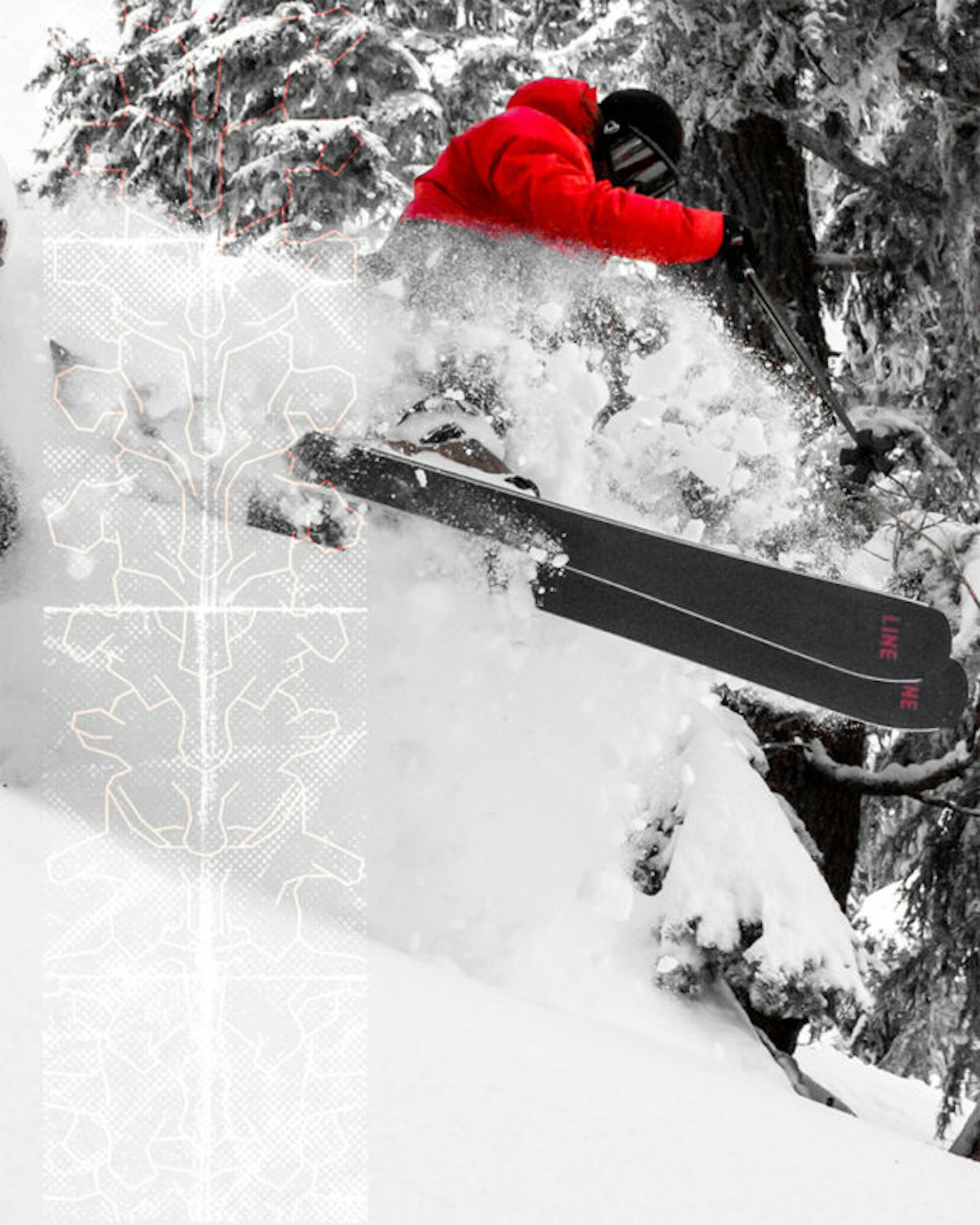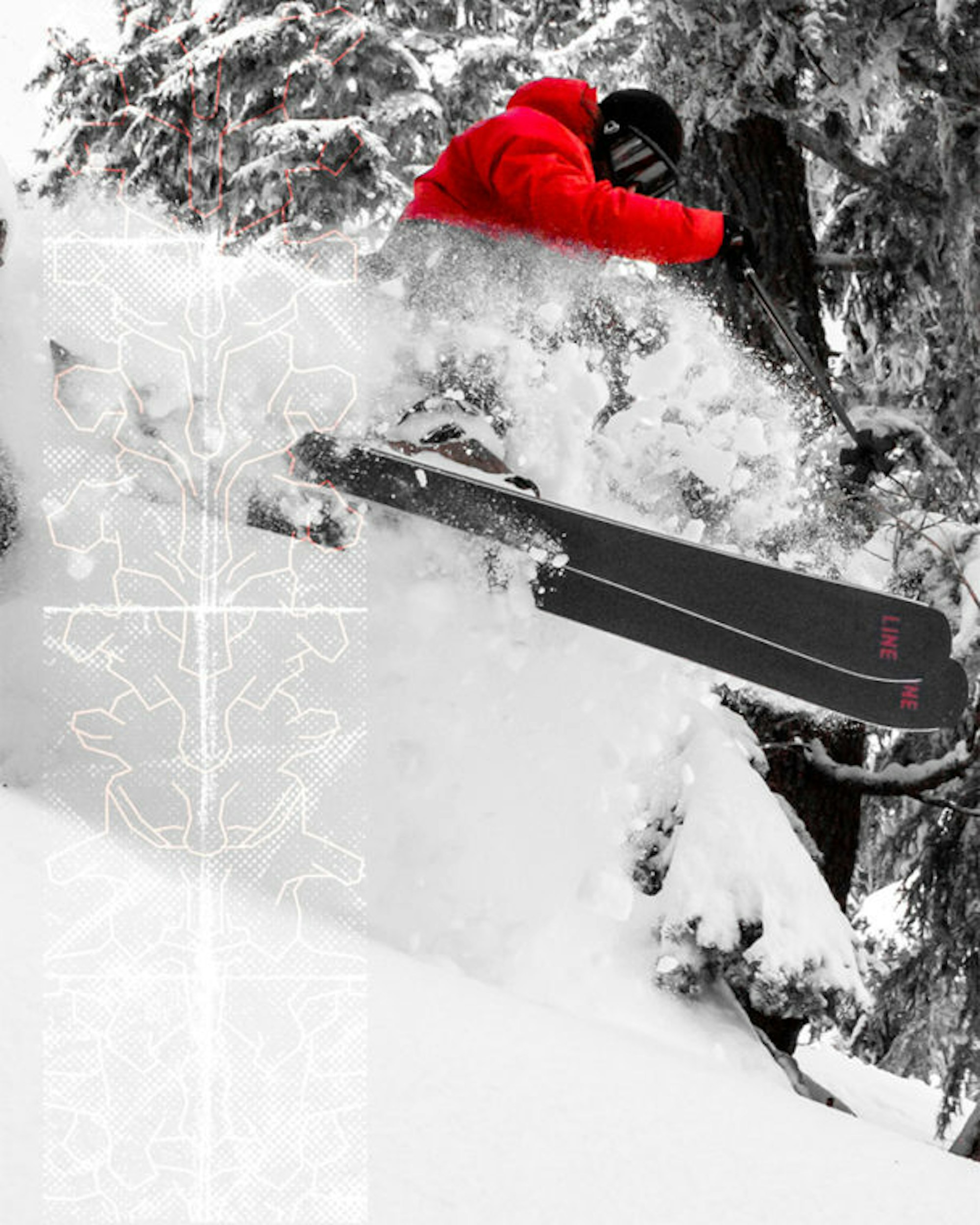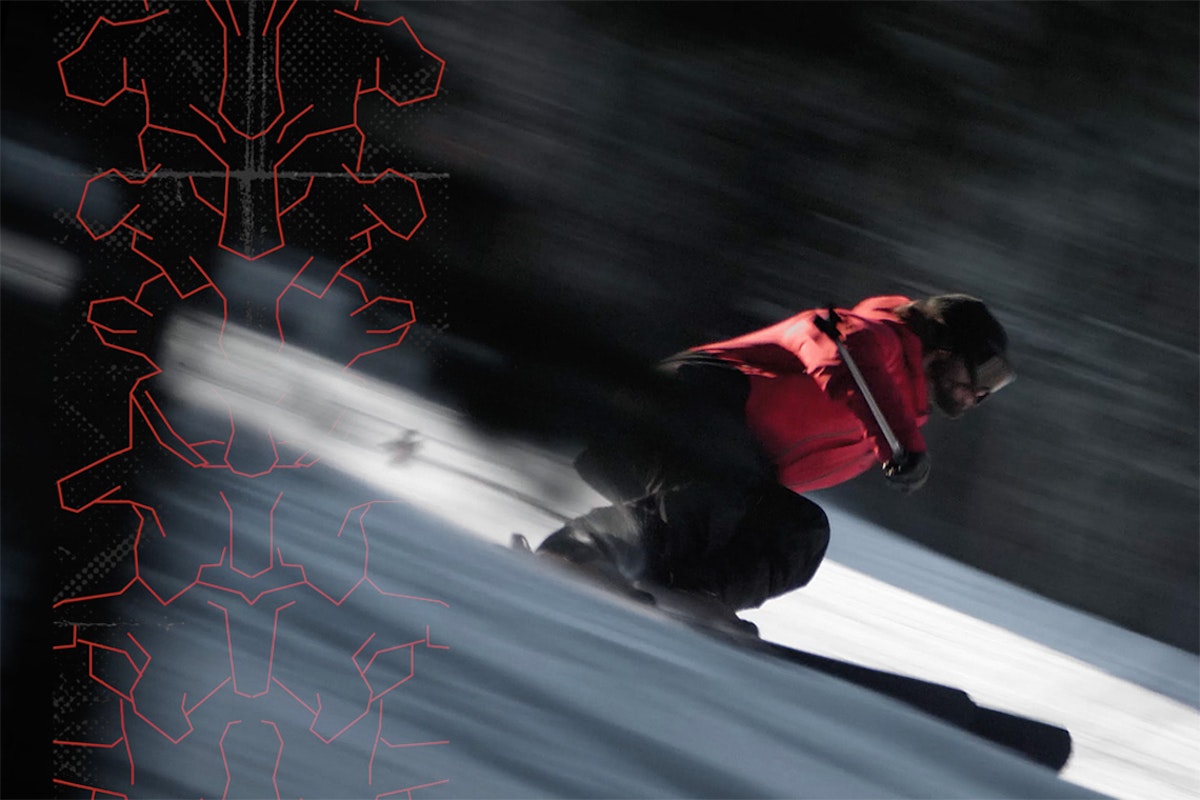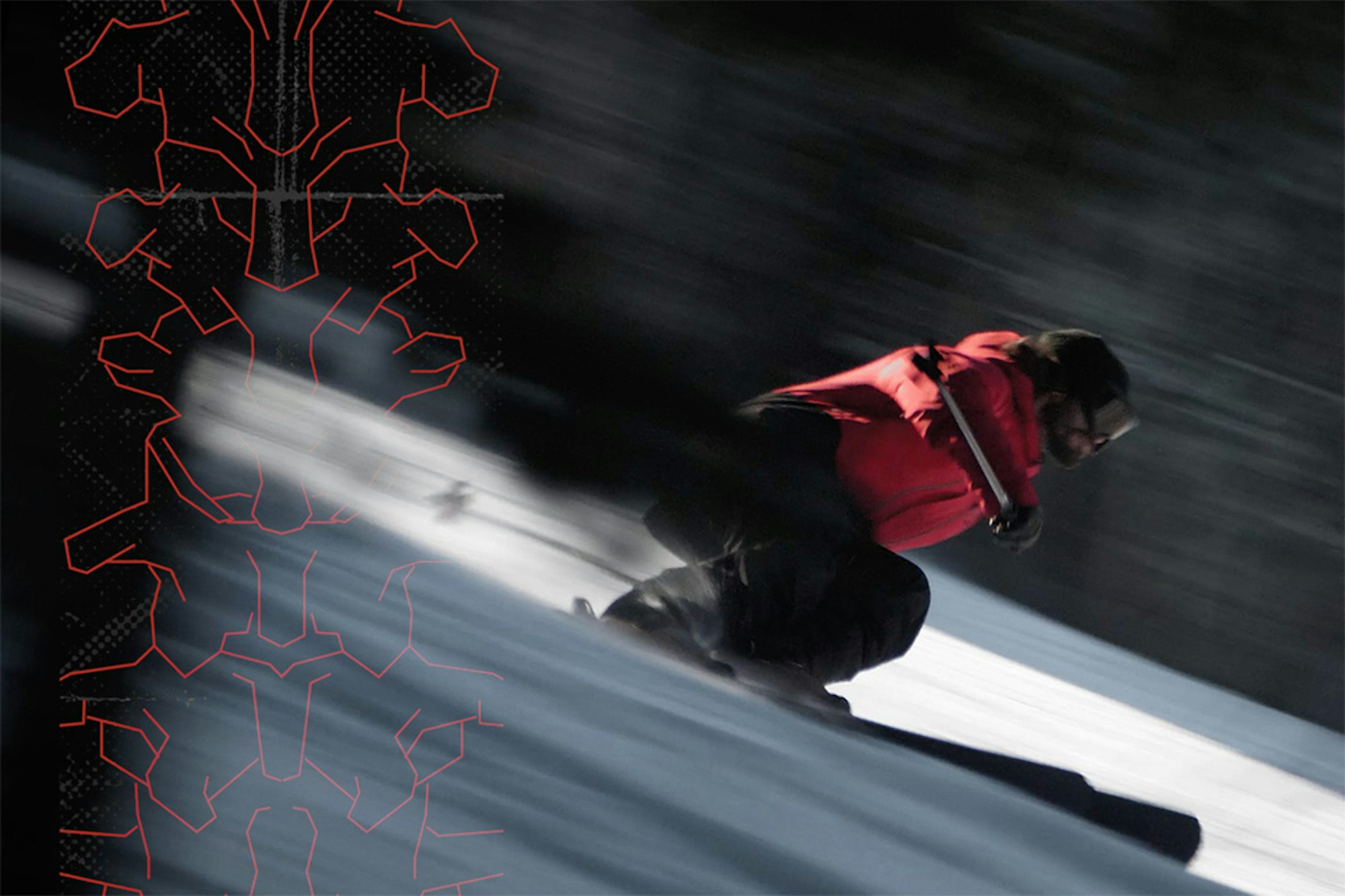What do you think of when you think of Line Skis? “Skiing the wrong way since ’95,” right? Line was hatched by Jason Levinthal in 1995 to produce skis that would enable skiers to hit jumps, ride backwards, spin easily and, overall, be more creative. At first, Line produced ski boards, that propelled Mike Nick to an X Games slopestyle gold medal in 1998, but in Line really took off in 1999, when it produced the full-length, twin-tip Ostness Dragon, and it hasn’t looked back since, remaining a top choice for freestyle-inspired skiers to this day.
However, Line ain’t no one trick pony, and the brand is releasing a completely out-of-character ski, called The Blade, for 2021. It’s not a twin tip (although its shape is funky), it’s not playful and it won’t ski switch (at least not very well). It’s meant to do one thing: slice up groomers like Wesley Snipes vanquished vampires in the film the ski shares its name with.
On a bluebird day in Vail, Colorado, back in December, I had the opportunity to click into the Blades first-thing in the morning, and carve my way down fields of virgin corduroy, i.e., the absolute perfect testing conditions for these skis. Despite the fact that I had to do double, triple and quadruple takes to confirm that I was, indeed, riding a Line ski, the Blades were absolutely magnificent on-piste. They were powerful, locked into the turn with little input, responsive and, best of all, stable and torsionally rigid—just what you want when maxing out the speedometer on steep frontside faces.
Inside the ski, you’ll find a few innovative techniques that make the Blade unique. The tip and tail shape, while definitely eyebrow-raising, are inspired by directional skateboards of the 1980s that promoted carving, power slides and slashing in skate bowls. As far the guts, the Blade is powered by Gas Pedal Metal, two independent Titanal pieces (one near the tip, with a break underfoot and another near the tail) with strips that extend across the ski, resulting in unmatched torsional rigidity and edge grip without loss of energy. By splitting the Titanal in two, Line aimed to promote a rounder and more dynamic turn shape, as well as make it easier to change the size and shape of the turn, by slightly softening the longitudinal flex.


While the Blade is a bit out of this world, and, at first glance, out of character for Line, the ski is actually an evolution of the Sakana, which itself is an evolution of the Pescado, and thus, simply an continuation of Line’s out-of-the-box way of thinking and designing skis.
If you’re a diehard Line loyalist who’s been keeping an eye out for something they can use exclusively to slay groomers, the Blade should be right at the top of your list. Keep an eye out for The Blade, hitting the market in fall 2020.
Product specs:


Line Blade
Lengths: 169, 176 cm
Dimensions: 154-95-124 mm
Radius: “Tight”
MSRP: $900


Line Blade W
Lengths: 153, 160,167 cm
Dimensions: 140-92-114
Radius: “Tight”
MSRP: $800


![[GIVEAWAY] Win a Head-to-Toe Ski Setup from IFSA](https://www.datocms-assets.com/163516/1765920344-ifsa.jpg?w=200&h=200&fit=crop)

![[GIVEAWAY] Win a Legendary Ski Trip with Icelantic's Road to the Rocks](https://www.datocms-assets.com/163516/1765233064-r2r26_freeskier_leaderboard1.jpg?w=200&h=200&fit=crop)

![[GIVEAWAY] Win a Legendary Ski Trip with Icelantic's Road to the Rocks](https://www.datocms-assets.com/163516/1765233064-r2r26_freeskier_leaderboard1.jpg?auto=format&w=400&h=300&fit=crop&crop=faces,entropy)




![[GIVEAWAY] Win a Head-to-Toe Ski Setup from IFSA](https://www.datocms-assets.com/163516/1765920344-ifsa.jpg?auto=format&w=400&h=300&fit=crop&crop=faces,entropy)


